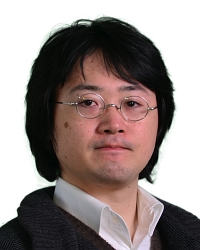TR2020-182
Application of Deep Learning for Nanophotonic Device Design
-
- , "Application of Deep Learning for Nanophotonic Device Design", SPIE Photonics West, Bahram Jalali and Ken-ichi Kitayama, Eds., DOI: 10.1117/12.2579104, March 2021.BibTeX TR2020-182 PDF Video
- @inproceedings{Kojima2021mar,
- author = {Kojima, Keisuke and Tang, Yingheng and Koike-Akino, Toshiaki and Wang, Ye and Jha, Devesh K. and TaherSima, Mohammad and Parsons, Kieran},
- title = {{Application of Deep Learning for Nanophotonic Device Design}},
- booktitle = {SPIE Photonics West},
- year = 2021,
- editor = {Bahram Jalali and Ken-ichi Kitayama},
- month = mar,
- publisher = {SPIE},
- doi = {10.1117/12.2579104},
- url = {https://www.merl.com/publications/TR2020-182}
- }
- , "Application of Deep Learning for Nanophotonic Device Design", SPIE Photonics West, Bahram Jalali and Ken-ichi Kitayama, Eds., DOI: 10.1117/12.2579104, March 2021.
-
MERL Contacts:
-
Research Areas:
Artificial Intelligence, Electronic and Photonic Devices, Machine Learning, Signal Processing
Abstract:
We present three different approaches to apply deep learning to inverse design for nanophotonic devices. The forward models use device parameters as inputs and device responses as outputs. This model works as a fast approximation method which can be integrated in the optimization loop, and can accelerate the optimization. The network is updated as we obtain more simulation data on the fly for better approximation. The inverse modeling uses a network trained with the device responses as inputs, and the device parameters as outputs. This way the network outputs the device structure given the target optical response. This network can also be updated as we obtain more data during the optimization and validation. The generative model we use is a variant of a conditional variational autoencoder, and the network learns the statistical characteristics of the device structure, and it generates a series of improved designs given the target device responses. By using these three models, we demonstrate how to design nanophotonic power splitters with multiple splitting ratios.


